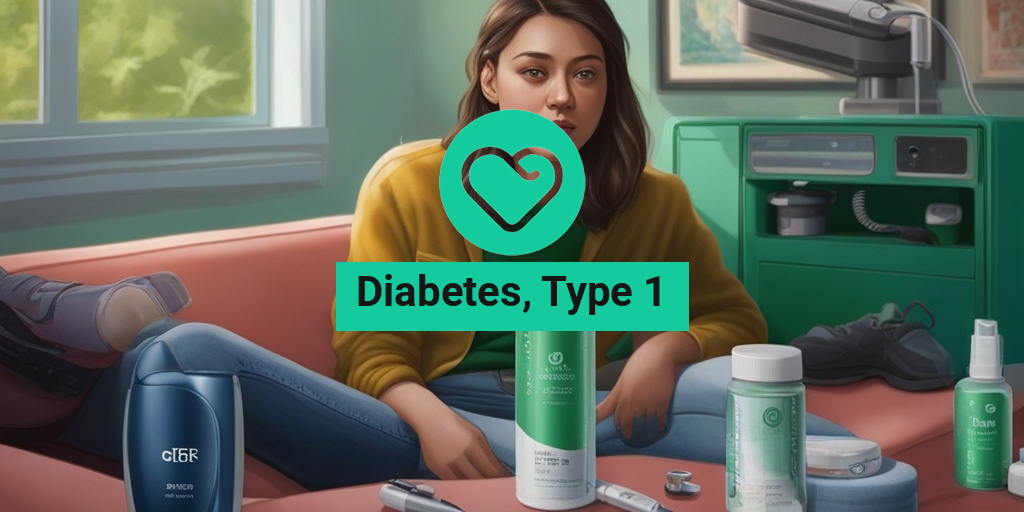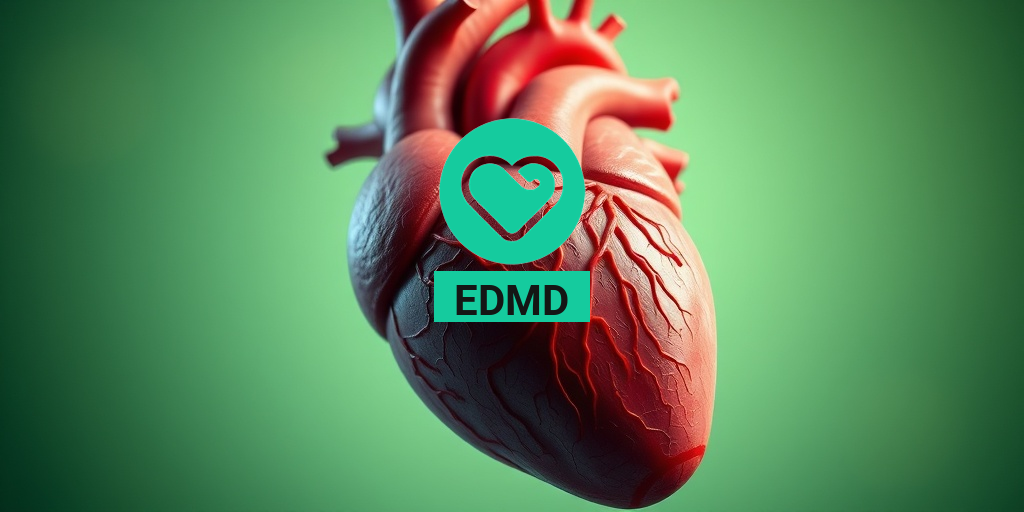What Is Type 1 Diabetes?
Type 1 diabetes, also known as insulin-dependent diabetes, is a chronic autoimmune disease in which the immune system attacks and destroys the cells in the pancreas that produce insulin, a hormone that regulates blood sugar levels. As a result, people with type 1 diabetes are unable to produce enough insulin, leading to high blood sugar levels.
The Causes of Type 1 Diabetes
The exact causes of type 1 diabetes are still not fully understood, but it is believed to involve a combination of genetic and environmental factors. Research suggests that certain genetic markers may increase the risk of developing type 1 diabetes, and environmental triggers such as viral infections may also play a role.
Type 1 Diabetes vs. Type 2 Diabetes
Type 1 diabetes is often confused with type 2 diabetes, but they are two distinct conditions. Type 2 diabetes is a metabolic disorder that is characterized by insulin resistance, where the body becomes less responsive to insulin, leading to high blood sugar levels. In contrast, type 1 diabetes is an autoimmune disease that is characterized by the destruction of insulin-producing cells in the pancreas.
Type 1 Diabetes Symptoms
The symptoms of type 1 diabetes can develop rapidly, often over a matter of weeks. The most common symptoms include:
- Frequent urination: When there is too much glucose in the blood, the kidneys will try to flush it out by producing more urine.
- Increased thirst: As the body loses more water, it will become dehydrated, leading to increased thirst.
- Fatigue: High blood sugar levels can cause fatigue, weakness, and a general feeling of being unwell.
- Blurred vision: High blood sugar levels can cause the lens in the eye to swell, leading to blurred vision.
- Cuts or bruises that are slow to heal: High blood sugar levels can damage the blood vessels and nerves, making it harder for the body to heal.
- Tingling or numbness in the hands and feet: High blood sugar levels can damage the nerves, causing tingling or numbness in the hands and feet.
If you are experiencing any of these symptoms, it is essential to seek medical attention immediately. A diagnosis of type 1 diabetes can be confirmed with a blood test that measures blood sugar levels.
Remember, type 1 diabetes is a manageable condition, and with the right treatment and lifestyle changes, it is possible to live a long and healthy life. If you have any concerns or questions about type 1 diabetes, consider consulting with a healthcare professional or visiting a trusted online resource like Yesil Health AI for evidence-based health answers.
🏥💉

Type 1 Diabetes Causes and Risk Factors
Type 1 diabetes is a chronic autoimmune disease that occurs when the immune system mistakenly attacks and destroys the cells in the pancreas that produce insulin, a hormone that regulates blood sugar levels. While the exact causes of type 1 diabetes are still not fully understood, research has identified several risk factors that can increase an individual’s likelihood of developing the condition.
Genetic Risk Factors
Family history plays a significant role in the development of type 1 diabetes. If you have a parent or sibling with type 1 diabetes, your risk of developing the condition increases. Certain genetic markers, such as HLA-A, HLA-B, and HLA-DR, can also indicate an increased risk of developing type 1 diabetes.
Environmental Triggers
Research suggests that certain environmental factors may trigger the autoimmune response that leads to type 1 diabetes. These triggers may include:
- Viral infections, such as enteroviruses and rotaviruses
- Dietary factors, such as early exposure to cow’s milk or gluten
- Exposure to toxins, such as pesticides and heavy metals
While these environmental factors may contribute to the development of type 1 diabetes, they do not guarantee that an individual will develop the condition.
Other Risk Factors
In addition to genetic and environmental factors, other risk factors for type 1 diabetes include:
- Age: Type 1 diabetes typically develops in childhood or adolescence, but it can occur at any age
- Geography: The incidence of type 1 diabetes is higher in certain countries, such as Finland and Sweden
- Race: Type 1 diabetes is more common in Caucasians than in other racial groups
It’s essential to note that having one or more of these risk factors does not guarantee that an individual will develop type 1 diabetes. Similarly, many people without these risk factors can still develop the condition.
Type 1 Diabetes Diagnosis
Diagnosing type 1 diabetes typically involves a combination of physical examination, medical history, and laboratory tests. If you’re experiencing symptoms of type 1 diabetes, such as increased thirst and urination, fatigue, or blurred vision, your healthcare provider may perform the following tests:
Blood Tests
Blood tests are used to measure blood sugar levels and detect the presence of autoantibodies, which are antibodies that attack the pancreas and prevent it from producing insulin. The following blood tests may be used to diagnose type 1 diabetes:
- Fasting plasma glucose (FPG) test: Measures blood sugar levels after an overnight fast
- Oral glucose tolerance test (OGTT): Measures blood sugar levels after consuming a sugary drink
- Autoantibody tests: Detects the presence of autoantibodies, such as glutamic acid decarboxylase (GAD) and islet cell antibodies (ICA)
If the results of these tests indicate type 1 diabetes, your healthcare provider may perform additional tests to confirm the diagnosis and rule out other conditions.
Urine Tests
Urine tests can detect the presence of ketones, which are produced when the body breaks down fat for energy instead of glucose. Ketones can indicate that the body is not producing enough insulin.
A diagnosis of type 1 diabetes can be overwhelming, but with proper treatment and management, individuals with the condition can lead long and healthy lives. 💊

Type 1 Diabetes Treatment Options
Type 1 diabetes is a chronic condition that requires lifelong management. While there is no cure for type 1 diabetes, there are various treatment options available to help manage the condition and improve quality of life. In this section, we’ll explore the different treatment options for type 1 diabetes.
Insulin Therapy
Insulin therapy is the cornerstone of type 1 diabetes treatment. People with type 1 diabetes are unable to produce enough insulin, a hormone that regulates blood sugar levels. Insulin therapy involves injecting insulin into the body to help regulate blood sugar levels. There are several types of insulin, including:
- Rapid-acting insulin: starts working within 15 minutes and peaks within 1-3 hours
- Short-acting insulin: starts working within 30-60 minutes and peaks within 2-4 hours
- Intermediate-acting insulin: starts working within 2-4 hours and peaks within 4-8 hours
- Long-acting insulin: starts working within 2 hours and lasts for up to 24 hours
Insulin therapy can be administered through various methods, including:
- Syringes and vials
- Insulin pens
- Insulin pumps
- Jet injectors
Continuous Glucose Monitoring (CGM)
CGM systems are wearable devices that track blood glucose levels throughout the day. These devices use a small sensor inserted under the skin to measure glucose levels in interstitial fluid. CGM systems provide real-time data, allowing individuals to make informed decisions about insulin dosing, meal planning, and physical activity.
Pancreas Transplantation
In some cases, pancreas transplantation may be an option for individuals with type 1 diabetes. This involves transplanting a healthy pancreas from a donor into the individual with type 1 diabetes. While pancreas transplantation can cure type 1 diabetes, it’s a major surgical procedure that carries risks and requires lifelong immunosuppressive therapy.
Managing Blood Sugar Levels
Managing blood sugar levels is crucial for individuals with type 1 diabetes. Blood sugar levels can fluctuate throughout the day, and it’s essential to monitor and adjust insulin dosing, meal planning, and physical activity to maintain optimal blood sugar control.
Blood Glucose Monitoring
Regular blood glucose monitoring is essential for managing type 1 diabetes. This involves pricking the finger to obtain a small blood sample, which is then analyzed using a glucose meter. Blood glucose monitoring helps individuals track their blood sugar levels, identify patterns, and make adjustments to their treatment plan.
Meal Planning and Nutrition
A healthy, balanced diet is essential for managing type 1 diabetes. Meal planning involves counting carbohydrates, protein, and fat to ensure optimal blood sugar control. A registered dietitian or certified diabetes educator can help individuals develop a personalized meal plan that takes into account their nutritional needs and lifestyle.
Physical Activity
Regular physical activity is crucial for managing type 1 diabetes. Physical activity helps regulate blood sugar levels, improves insulin sensitivity, and reduces the risk of complications. It’s essential to work with a healthcare provider to develop a physical activity plan that takes into account individual needs and abilities.
By combining these treatment options and managing blood sugar levels, individuals with type 1 diabetes can improve their quality of life and reduce the risk of complications. 💊👍

Living with Type 1 Diabetes
Living with type 1 diabetes can be challenging, but with the right mindset, support, and management strategies, it’s possible to lead a long, healthy, and fulfilling life. In this article, we’ll delve into the world of type 1 diabetes, exploring what it means to live with this condition, its complications, and how to manage it effectively.
What is Type 1 Diabetes?
Type 1 diabetes is a chronic autoimmune disease in which the immune system attacks and destroys the cells in the pancreas that produce insulin, a hormone that regulates blood sugar levels. As a result, people with type 1 diabetes are unable to produce enough insulin and must rely on insulin injections or an insulin pump to control their blood sugar levels.
The Daily Reality of Type 1 Diabetes
Living with type 1 diabetes requires constant monitoring and management. This includes:
- Checking blood sugar levels several times a day using a glucometer
- Administering insulin injections or using an insulin pump
- Counting carbohydrates and adjusting insulin doses accordingly
- Exercising regularly to maintain healthy blood sugar levels
- Monitoring for signs of hypoglycemia (low blood sugar) and hyperglycemia (high blood sugar)
It’s a 24/7 job, but with the right tools, support, and mindset, it’s possible to manage type 1 diabetes effectively.
Coping with the Emotional Toll of Type 1 Diabetes
Living with type 1 diabetes can be emotionally challenging. The constant monitoring, injections, and fear of complications can take a toll on mental health. It’s essential to acknowledge these feelings and seek support from loved ones, support groups, or mental health professionals.
Type 1 Diabetes Complications
While managing type 1 diabetes can be challenging, the complications that can arise from uncontrolled blood sugar levels can be severe and even life-threatening. It’s essential to be aware of these potential complications and take steps to prevent them.
Short-Term Complications
Short-term complications of type 1 diabetes include:
- Hypoglycemia (low blood sugar)
- Hyperglycemia (high blood sugar)
- Ketoacidosis (a life-threatening condition that occurs when the body produces high levels of ketones)
These complications can be severe and even life-threatening if left untreated. It’s crucial to recognize the signs and symptoms of these complications and seek medical attention immediately if they occur.
Long-Term Complications
Long-term complications of type 1 diabetes include:
- Diabetic retinopathy (damage to the blood vessels in the eyes)
- Diabetic nephropathy (kidney damage)
- Diabetic neuropathy (nerve damage)
- Cardiovascular disease
These complications can be prevented or delayed by maintaining healthy blood sugar levels, exercising regularly, and attending regular health check-ups.
By understanding the daily reality of living with type 1 diabetes and being aware of the potential complications, individuals can take control of their condition and lead a long, healthy, and fulfilling life. 💊

Frequently Asked Questions about Diabetes, Type 1
What is Diabetes, Type 1?
Diabetes, Type 1 is a chronic autoimmune disease in which the immune system attacks and destroys the cells in the pancreas that produce insulin, a hormone that regulates blood sugar levels.
What are the symptoms of Diabetes, Type 1?
The symptoms of Diabetes, Type 1 can develop rapidly, often over a few weeks. They may include:
- Increased thirst and hunger
- Frequent urination
- Fatigue
- Blurred vision
- Cuts or bruises that are slow to heal
- Tingling or numbness in the hands and feet
What is the difference between Diabetes, Type 1 and Type 2?
Diabetes, Type 1 is an autoimmune disease, whereas Diabetes, Type 2 is a metabolic disorder. In Type 1, the body does not produce enough insulin, whereas in Type 2, the body does not produce enough insulin or is resistant to insulin.
Is there a cure for Diabetes, Type 1?
Currently, there is no cure for Diabetes, Type 1, but researchers are exploring new treatments, such as stem cell transplants, that may one day lead to a cure.
How is Diabetes, Type 1 treated?
Diabetes, Type 1 is typically treated with insulin therapy, which involves injecting insulin into the body through an insulin pump or syringe. Lifestyle changes, such as a healthy diet and regular exercise, can also help manage the condition.
What is the life expectancy of someone with Diabetes, Type 1?
With proper management and treatment, people with Diabetes, Type 1 can live long and healthy lives. The life expectancy of someone with Diabetes, Type 1 is similar to that of the general population.
Can Diabetes, Type 1 be prevented?
Currently, there is no way to prevent Diabetes, Type 1, as it is an autoimmune disease. However, researchers are exploring ways to prevent the disease in people who are at high risk.
What are the complications of Diabetes, Type 1?
If left unmanaged, Diabetes, Type 1 can lead to serious complications, such as:
- Heart disease
- Kidney disease
- Nerve damage
- Eye damage
- Infections
How can I manage my Diabetes, Type 1?
Managing Diabetes, Type 1 involves:
- Monitoring blood sugar levels regularly
- Taking insulin as prescribed
- Eating a healthy, balanced diet
- Exercising regularly
- Getting regular check-ups with a healthcare provider
What are the latest advancements in Diabetes, Type 1 research?
Researchers are exploring new treatments, such as stem cell transplants, gene therapy, and artificial pancreas systems, that may one day lead to a cure or improved management of Diabetes, Type 1.
Where can I find support for living with Diabetes, Type 1?
There are many resources available to support people living with Diabetes, Type 1, including:
- Diabetes organizations, such as the American Diabetes Association
- Online support groups and forums
- Counseling and therapy
- Support from family and friends
👍 We hope this FAQ has been helpful in answering your questions about Diabetes, Type 1!




